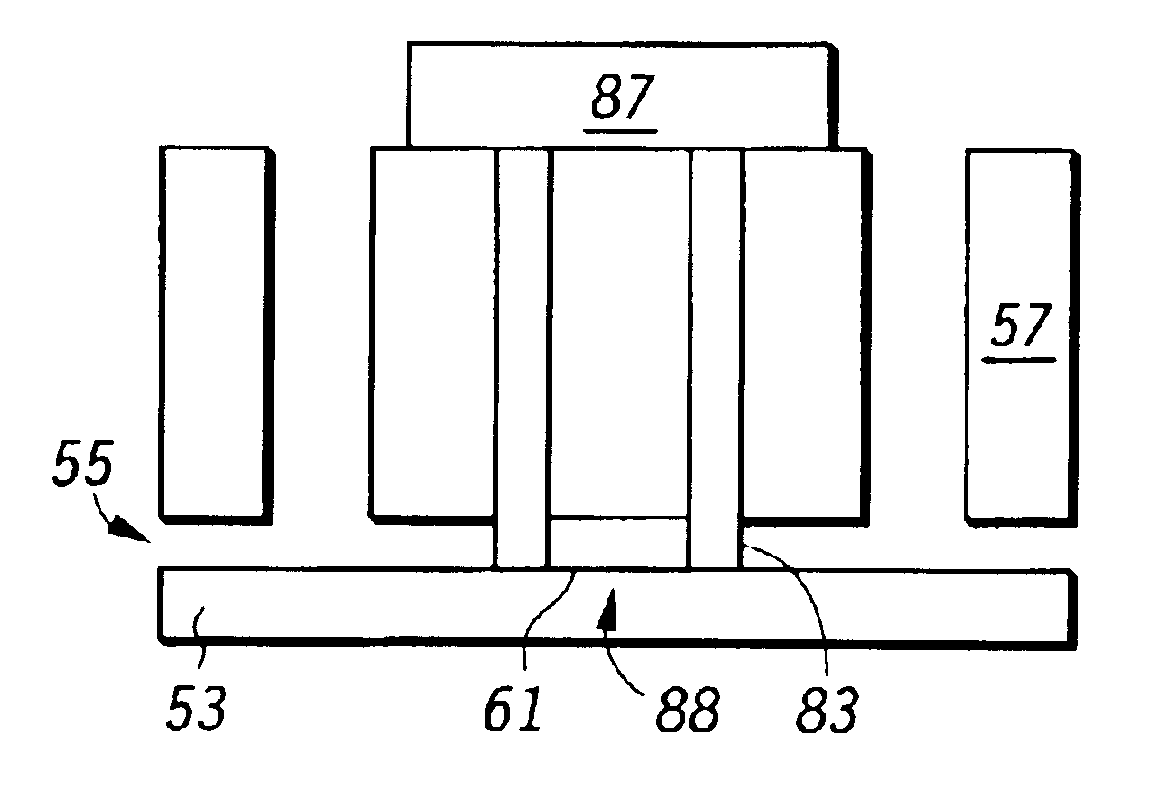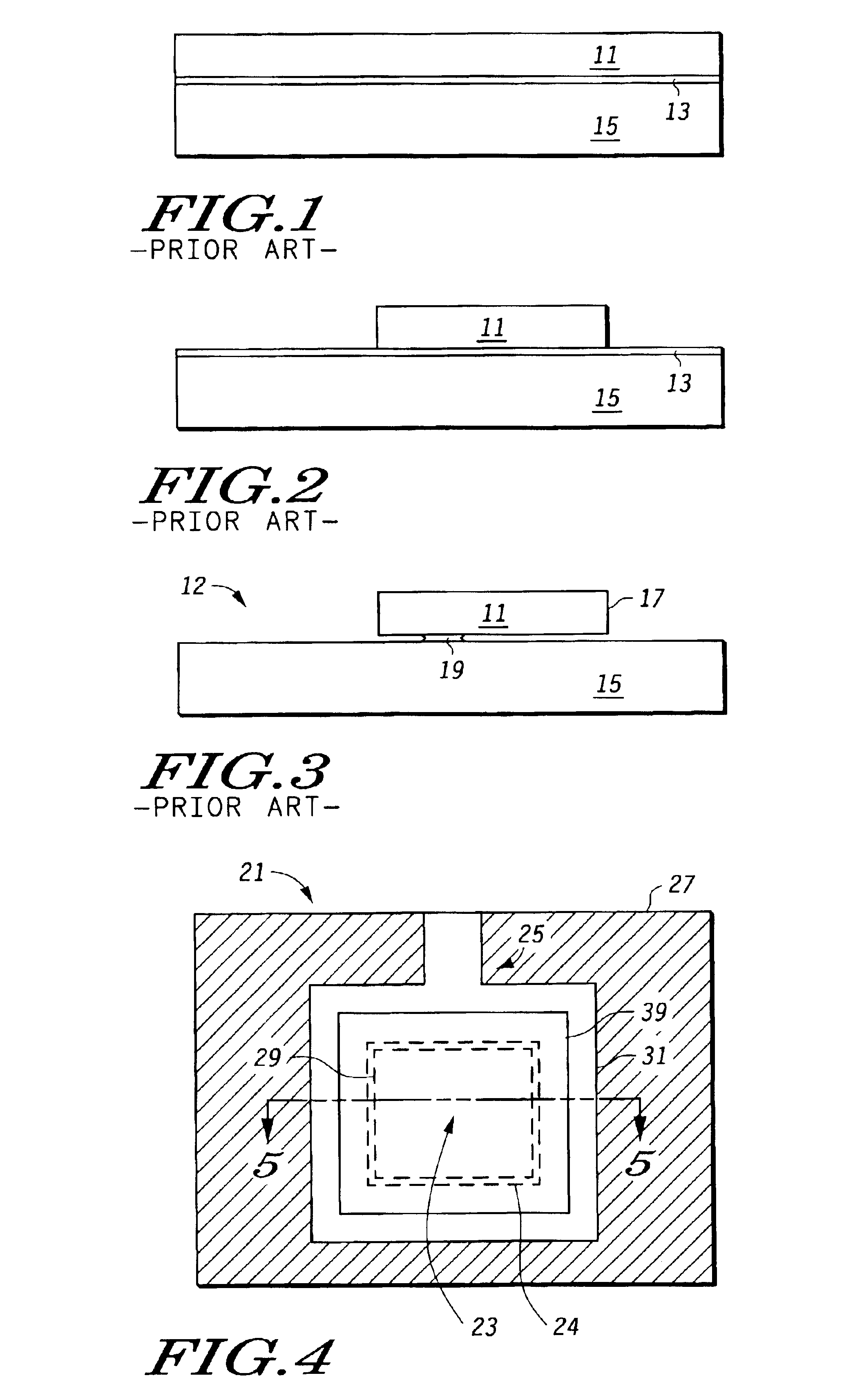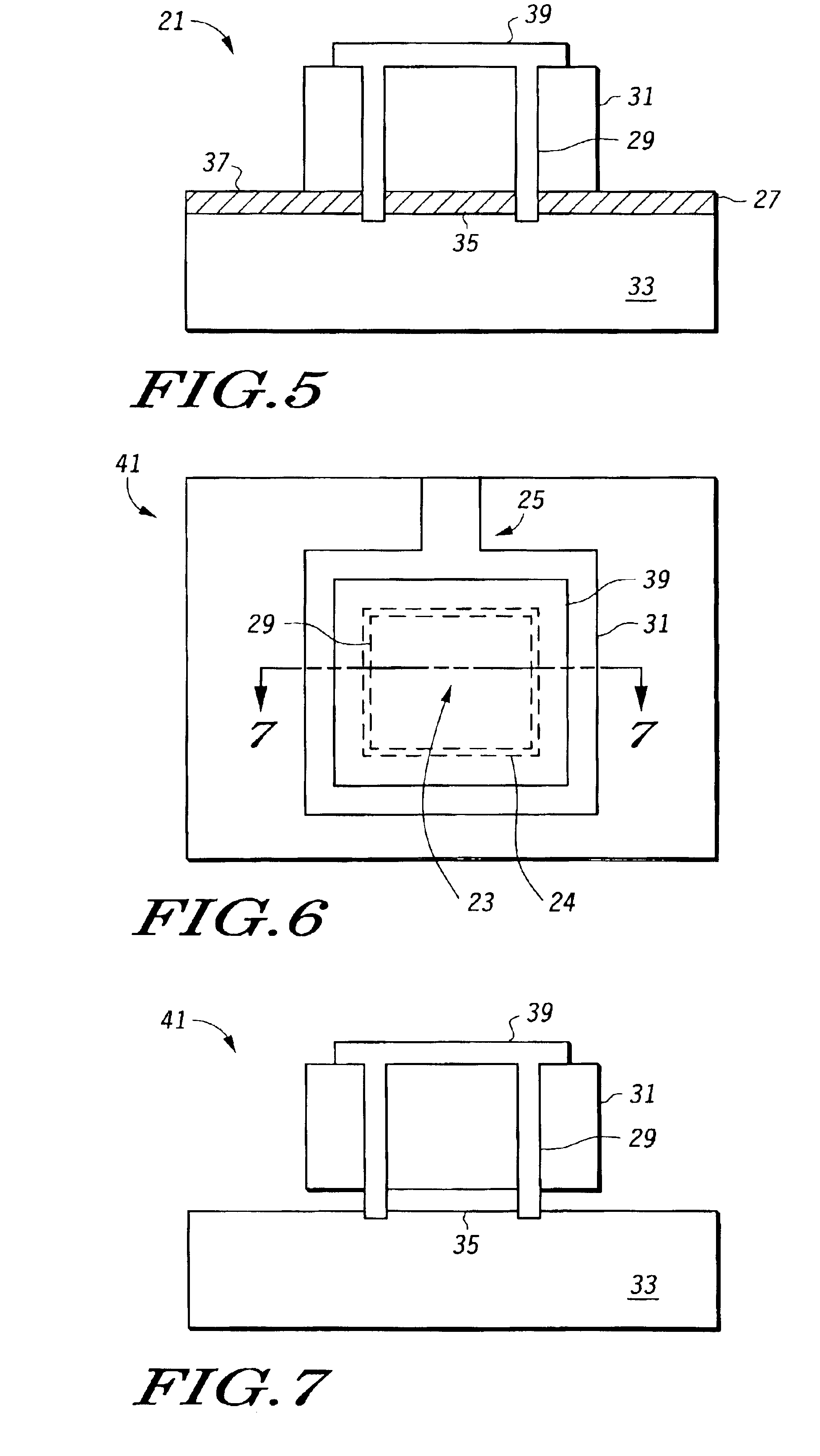SOI polysilicon trench refill perimeter oxide anchor scheme
a polysilicon trench and anchor scheme technology, applied in the field of microfabrication techniques, can solve the problems of increasing the overall die area, increasing the parasitic capacitance between the anchor and the substrate, and the size of the anchor perimeter of the device, so as to reduce the die size, minimize the perimeter, and minimize the parasitic capacitance
- Summary
- Abstract
- Description
- Claims
- Application Information
AI Technical Summary
Benefits of technology
Problems solved by technology
Method used
Image
Examples
Embodiment Construction
[0021]It has now been discovered that the above noted needs may be met by forming the anchor portion of a MEMS structure in such a way that it is protected during release by a material which is resistant to the etch used to achieve release of the structure. In the case of an SOI device, for example, this may be accomplished by forming a perimeter trench which defines the perimeter of the anchor portion of the device and which extends completely through the silicon and dielectric layers to the surface of the substrate. The trench is then filled with a material which is resistant to the etch used to achieve release of the structure, after which the structure is released by etching away a portion of the dielectric layer external to the perimeter trench. Since the fill material in the trench is resistant to the etch, the perimeter of the anchor portion is not significantly affected by the etch (that is, the dimensions of the anchor perimeter are not dependent on factors such as variatio...
PUM
| Property | Measurement | Unit |
|---|---|---|
| Thickness | aaaaa | aaaaa |
Abstract
Description
Claims
Application Information
 Login to View More
Login to View More - R&D
- Intellectual Property
- Life Sciences
- Materials
- Tech Scout
- Unparalleled Data Quality
- Higher Quality Content
- 60% Fewer Hallucinations
Browse by: Latest US Patents, China's latest patents, Technical Efficacy Thesaurus, Application Domain, Technology Topic, Popular Technical Reports.
© 2025 PatSnap. All rights reserved.Legal|Privacy policy|Modern Slavery Act Transparency Statement|Sitemap|About US| Contact US: help@patsnap.com



